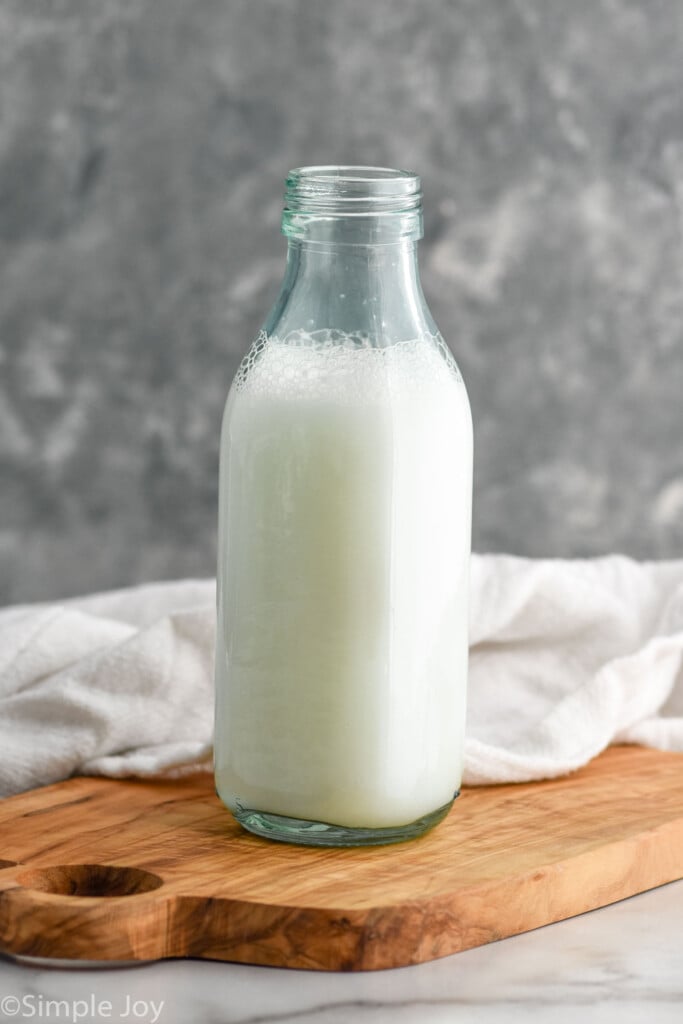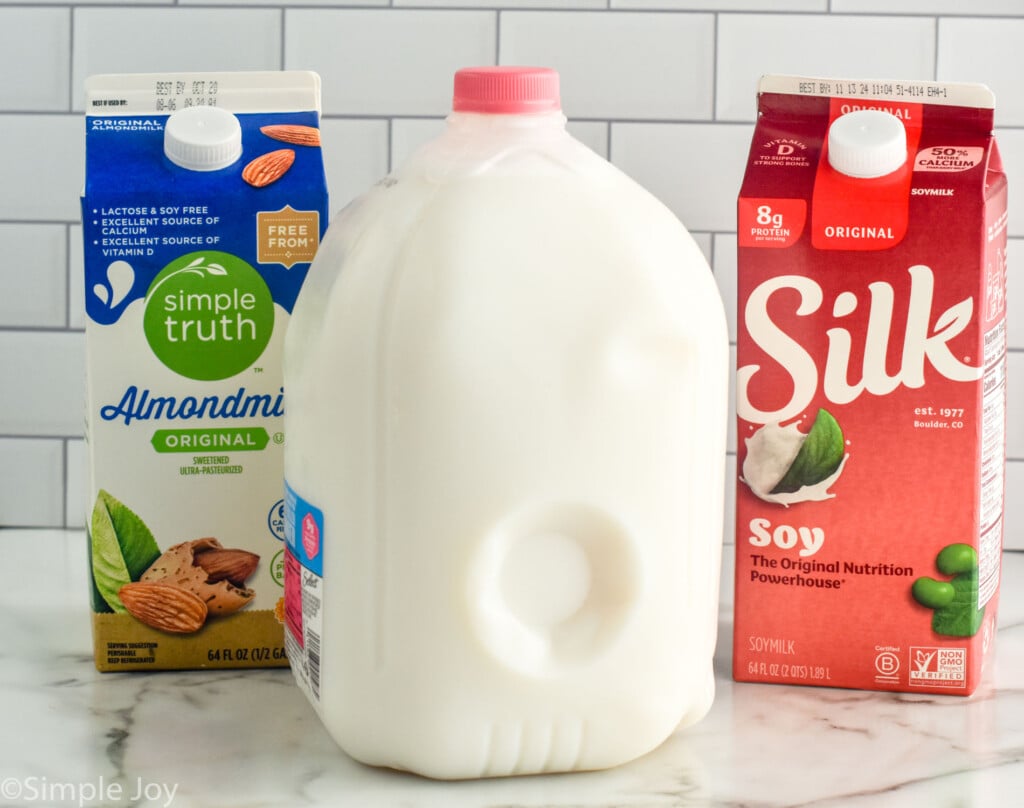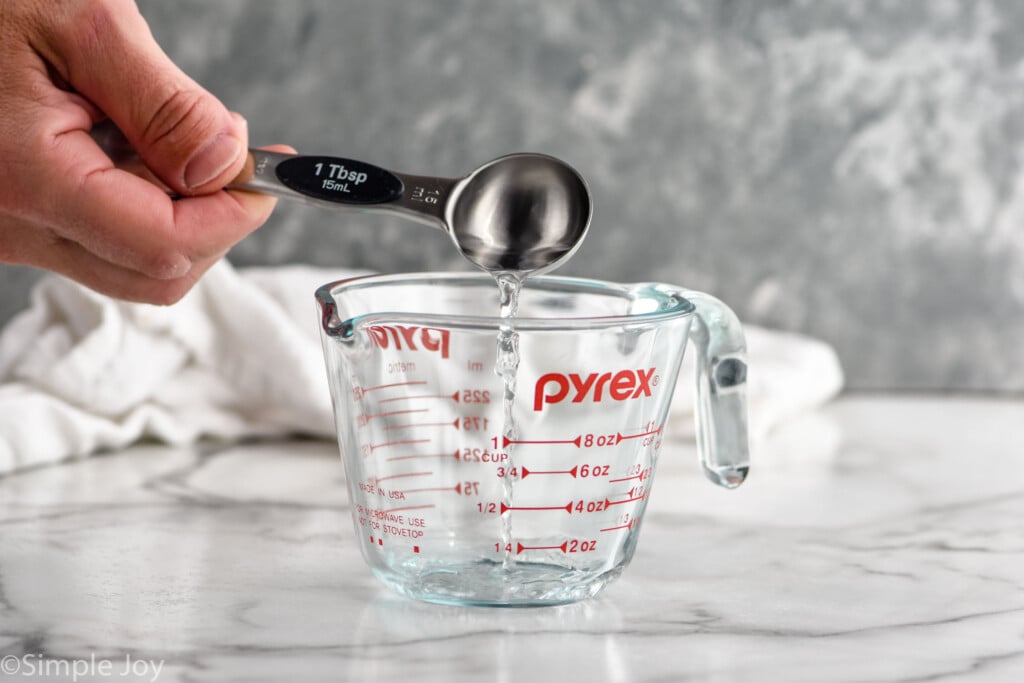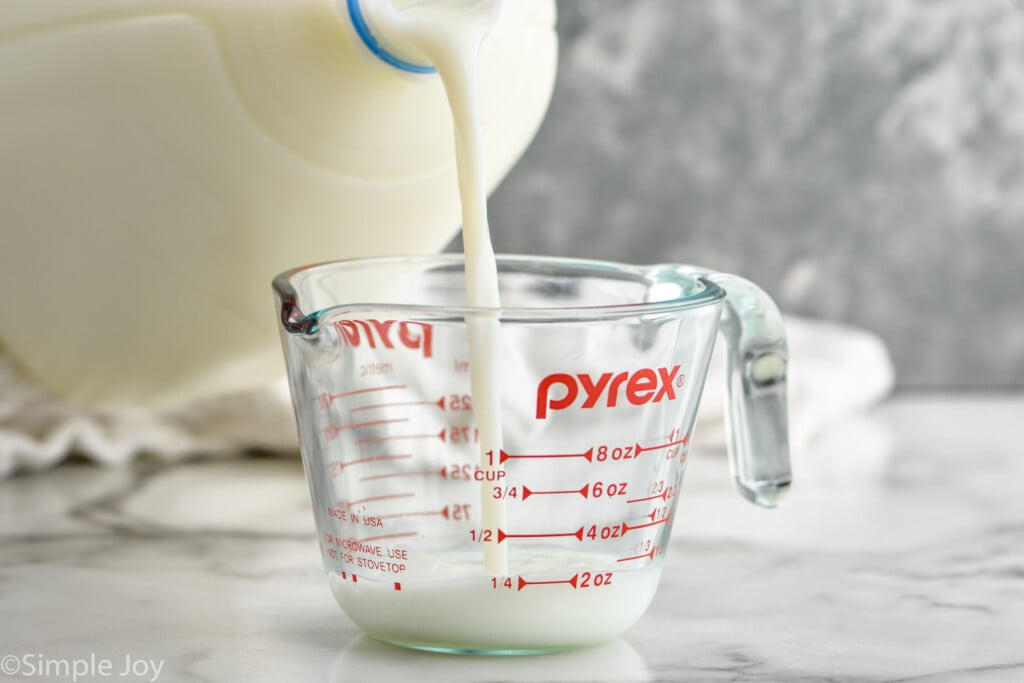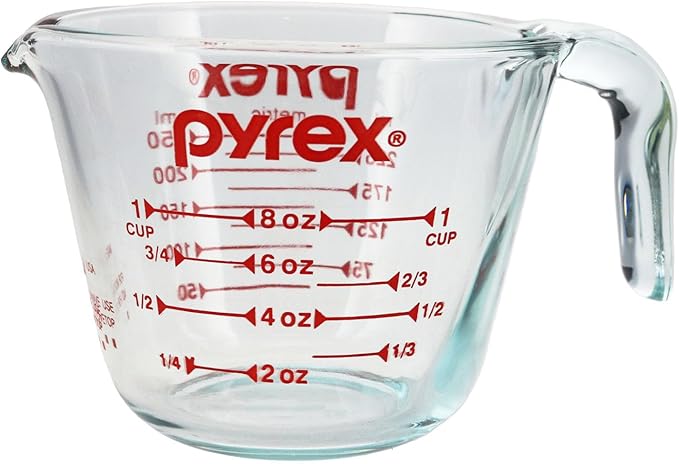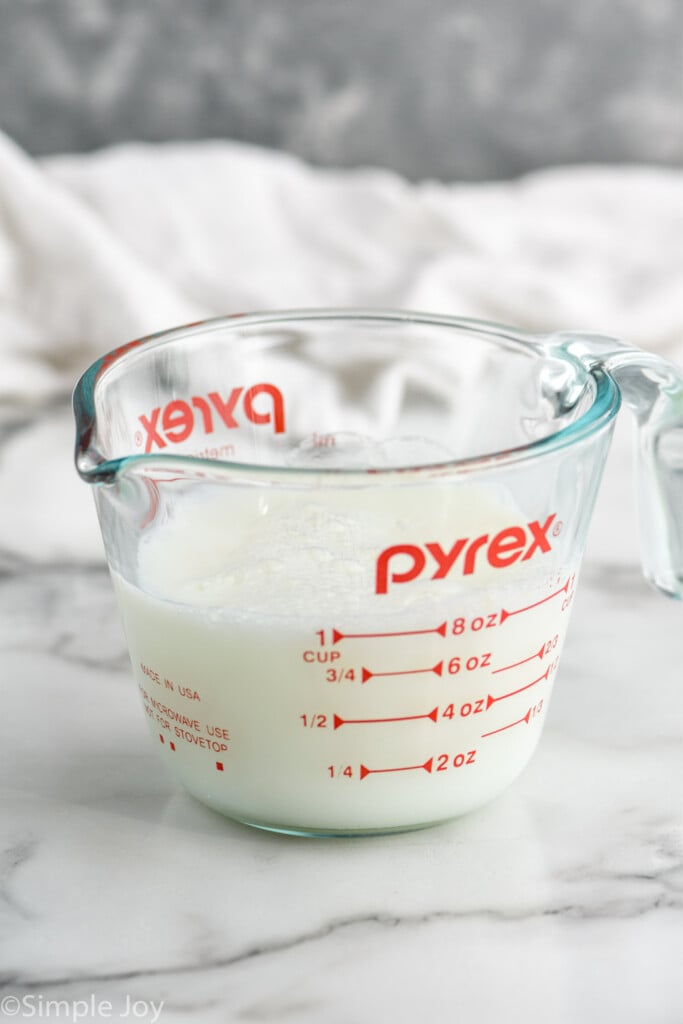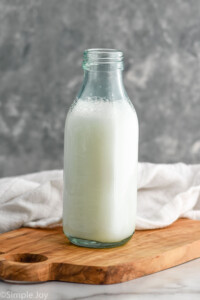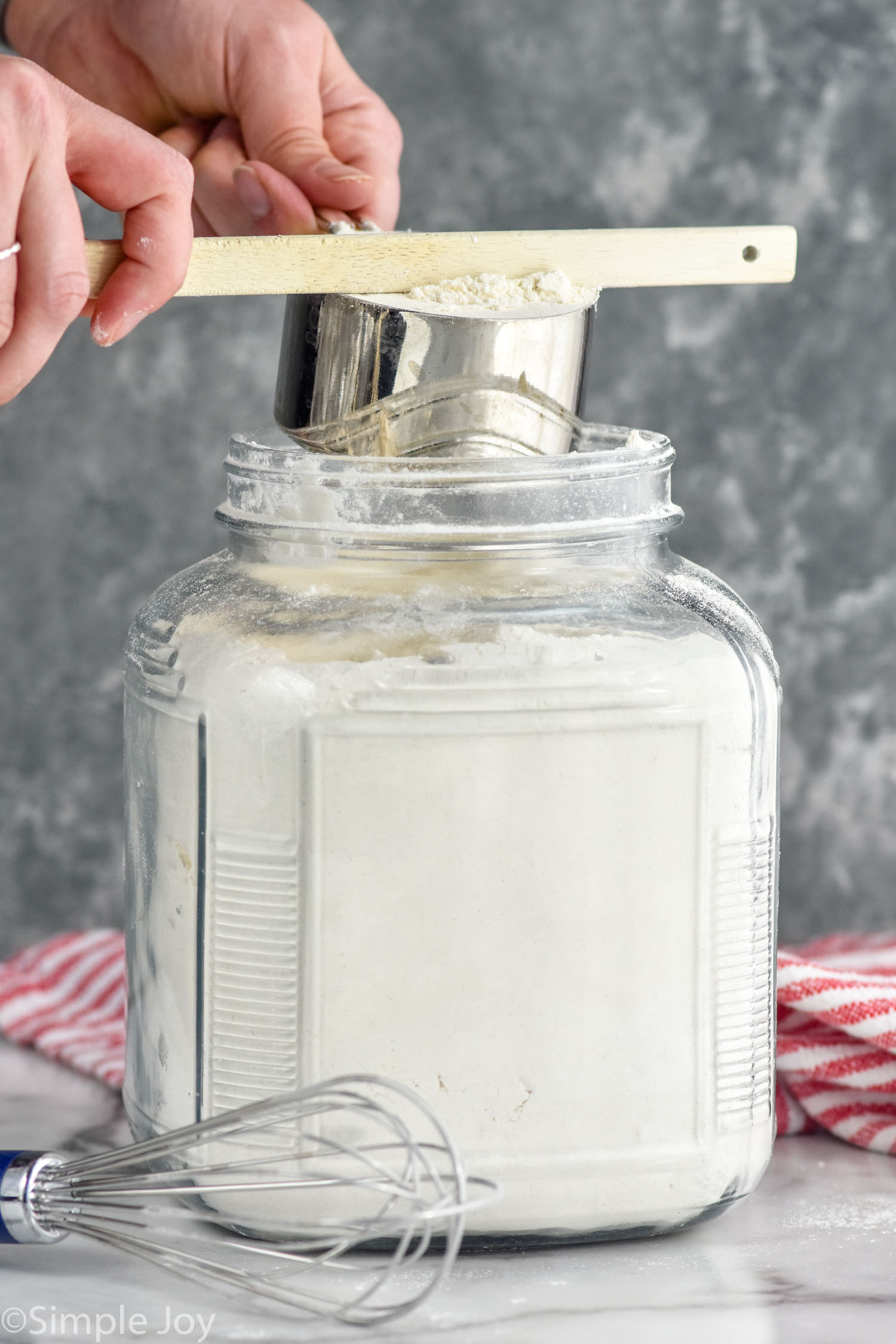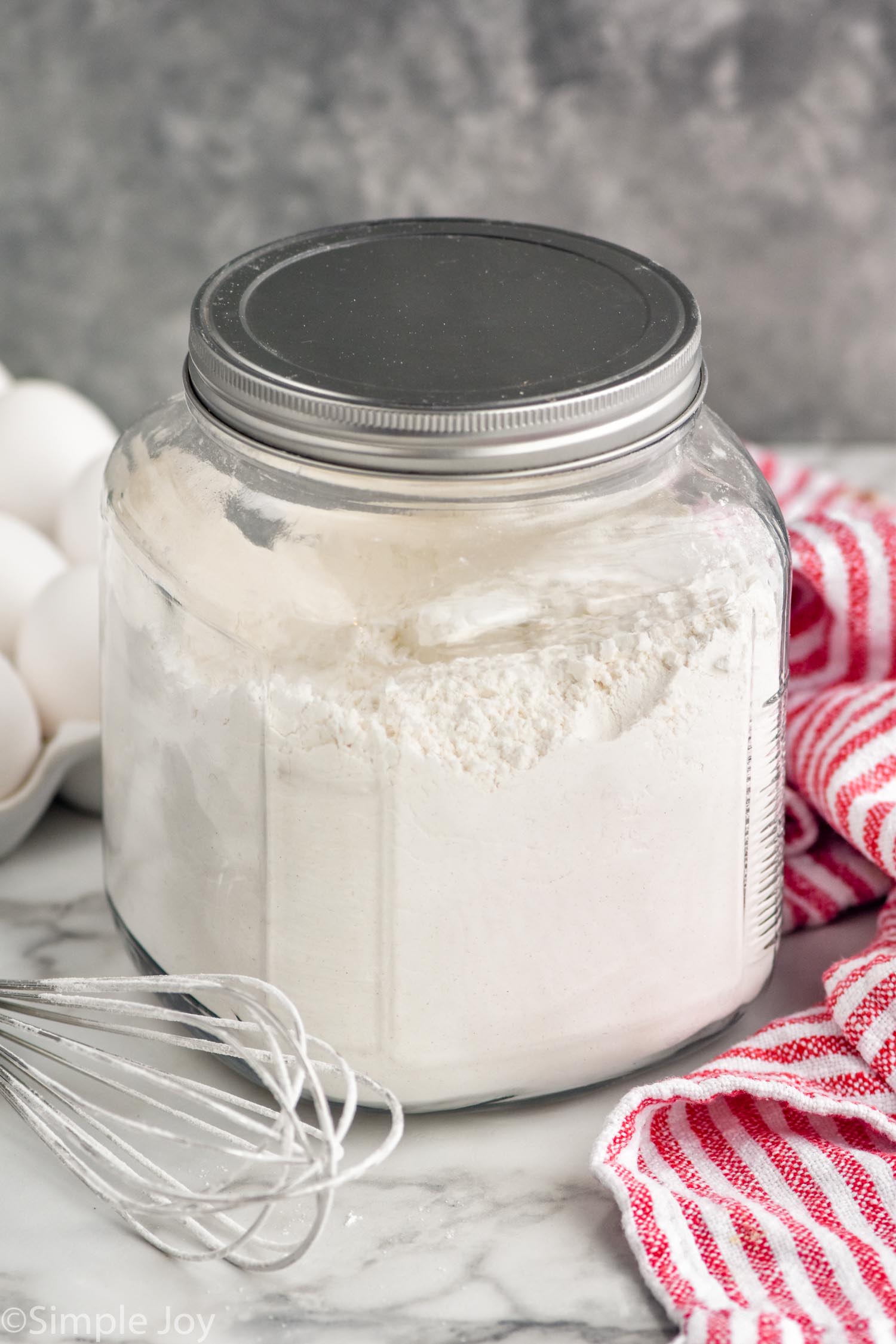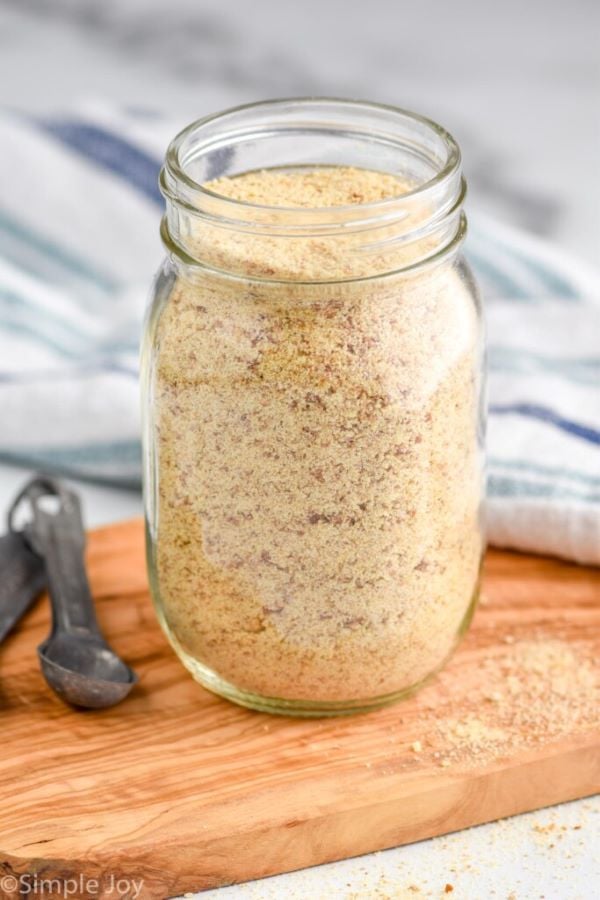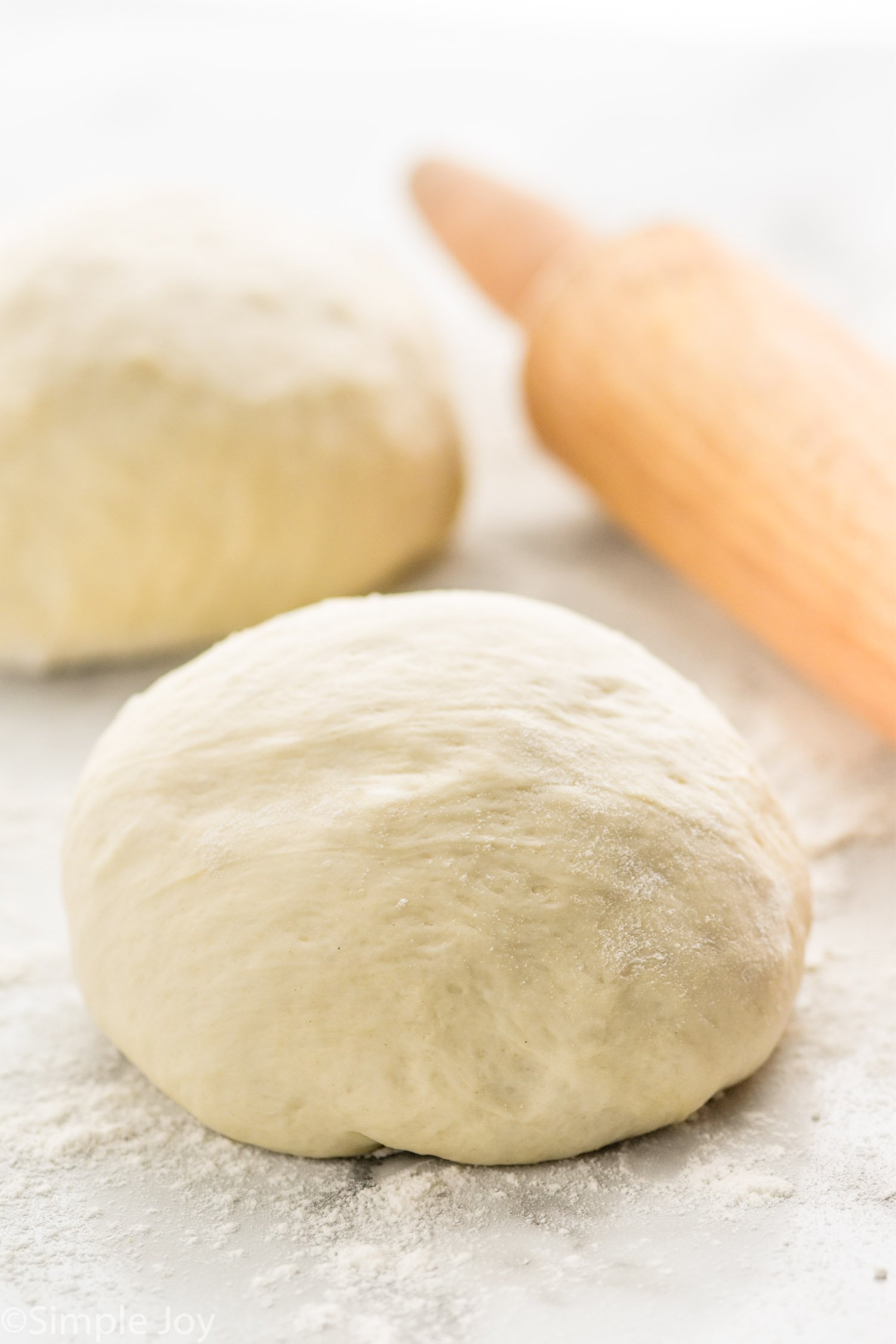Making your own buttermilk at home is quick and simple, using just two common ingredients you probably already have in your kitchen. It also helps to eliminate waste from having to buy a whole container of store-bought buttermilk when you just need a little bit. Whether you’re making fluffy pancakes or baking biscuits, this homemade buttermilk substitute is a perfect solution. When you add an acidic ingredient like vinegar or lemon juice to milk, it causes the milk to curdle slightly, thickening it and giving it a tangy flavor similar to traditional buttermilk. This acidity helps activate baking soda or baking powder in baked goods, leading to a lighter, fluffier texture. If you make this recipe for how to make buttermilk or any of my other recipes, I’d love to hear what you think. I would be so grateful if you left a comment!
Cow’s milk: Dairy milk is my preference for this method. The higher fat content you use the better your results will be. That being said, we don’t often have whole milk on hand and regularly use this method with skim milk and find that it works very well in recipes. Soy milk: When tested, plain unsweetened soy milk performed almost exactly the same as skim milk in recipes. This is a great way to make some of your favorite recipes vegan or dairy-free. Almond milk: While this did work in testing, you will find that you get significantly less rise in baked goods and a much more dense final product. I would highly recommend that you opt for soy milk instead for a dairy-free buttermilk substitute.
Combine milk and vinegar. Pour your vinegar into the liquid measuring cup then add milk until it reaches the one cup mark. Stir to combine Let the mixture sit for five minutes. Set a timer and make sure it sits for a full five minutes. It will curdle as it sits. Use in any recipe that calls for buttermilk.
Vinegar: You will want to use a plain white distilled vinegar. This will prevent any unwanted flavors in your recipe. Lemon Juice: While fresh lemon juice is always preferred, it isn’t always possible to keep fresh lemons on hand. In that case, I find that bottled lemon juice does work just as well here.
To make 1/4 cup, add 3/4 teaspoon 1 teaspoon vinegar or lemon juice to a measuring cup and then fill it with milk to the 1/4 cup mark. To make 1/3 cup, add 1 teaspoon vinegar or lemon juice to a measuring cup and then fill it with milk to the 1/3 cup mark. To make 1/2 cup, add 1/2 tablespoon (or 1 1/2 teaspoons) vinegar or lemon juice to a measuring cup and then fill it with milk to the 1/2 cup mark. To make 2/3 cup, add 2 teaspoons vinegar or lemon juice to a measuring cup and then fill it with milk to the 2/3 cup mark. To make 3/4 cup, add 2 1/4 teaspoons vinegar or lemon juice to a measuring cup and then fill it with milk to the 3/4 cup mark. To make 1 1/2 cups, add 1 1/2 tablespoons vinegar or lemon juice to a measuring cup and then fill it with milk to the 1 1/2 cup mark of a two cup glass measuring cup.
Coleslaw The Best Ranch Dressing Recipe Cornbread
